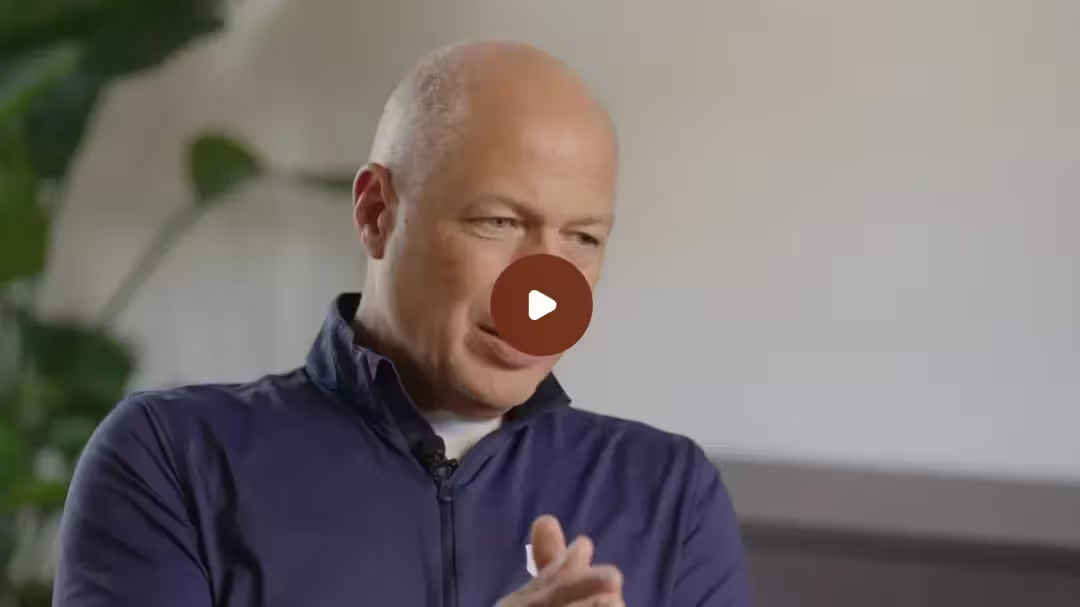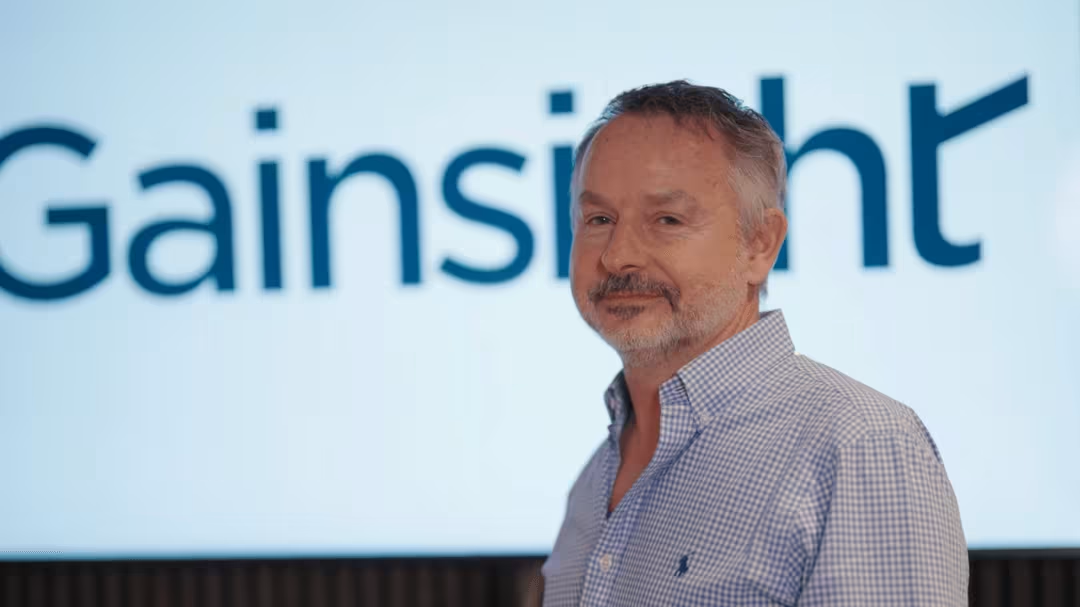Zandi Kleynhans from the Pearson Institute of Higher Education believes that implementing upselling and cross-selling processes into sales operations can lead to higher efficiency across a sales team and better customer experience. Zandi joined me all the way from Cape Town to share her fascinating research into this topic.
Rory Brown (RB): Hi Zandi, thanks so much for chatting with me today. I’d love to hear about your experiences and how they led you to this wonderful upsell research you’re working on?
Zandi Kleynhans (ZK): I’ve been in sales operations for a couple of years now. This interest really started when I attended a Sales Innovation Tech Fest that was hosted in Pretoria. From all the case studies we covered, one company name kept on coming up… that was Amazon.
After that, I did some research and what I found that was really incredible. In 2018, for the first time in 10 years, they cracked the Forbes 500 list and continued a remarkable growth run. The sales jumped something like $70 billion in two years and 45% of that they attributed to active cross-selling initiatives. This really got me thinking, how can other companies really learn from that kind of success. Even if we’re not in the same industry there’s definitely a valuable lesson for us to take from success like that. That’s really how this interest of mine started.
One of the challenges that I identified when I started very informally asking around is that most companies that have very specialised sales teams working in silos. The reason being that most sales reps only focus on promoting their own products and services or products that directly contribute to their targets. They are therefore not actively engaging in cross-selling or upselling initiatives.
What I found is that this could very often lead to a segmented customer experience especially in cases where your customer database overlaps. Even if we’re not aware that it overlaps, the question really for me was from a sales operations perspective, how do we enable our sales teams to have that cross-functional sales discussion in order to provide that seamless customer journey? I think there’s a couple of things that that we need to consider. This will obviously depend on the organisation structure, the sales cycle, products and services and market.
There are a couple of questions we need to ask. The first question is would all your sales reps be able to identify a sales opportunity for a product that they’re not targeted with or a product that doesn’t fit into their product basket? Secondly, would your sales reps be able to have a basic conversation with a potential customer about all your products and services? And thirdly, would your sales reps know how to pass on that lead to the correct person or specialised team to follow up or close?
I was also very interested in the potential revenue loss for lost opportunities and determining if we are or should be tracking lost opportunities and whether that has an impact on our overall customer experience. That’s really how this all got started. When I formulated this into a research project, I consulted with a couple of colleagues and used formal and informal interviews, surveys and focus groups to gather the data.
RB: It sounds like you identified the fact that it’s not happening. The fact that how would we make it happen? Are people able to have these conversations? Can you give a bit of perspective with the business as it stands, how different are we talking that these products are? Is it the same as someone selling pumps and then selling cars, which are totally different, or is it you’re selling education-esque products and services?
ZK: In the case of my organisation, all products and services are related to education, but our customers and markets are all different.
What really stood out for me, is that a lead could really come from anywhere. The question is how do we equip our sales teams to really enable them to have a conversation and to nurture that lead or to refer that lead to the right person. The question really is are we training our sales reps on a specific product or specific product basket? Or do we want to train and enable our sales reps to represent our brand? I think those are two very different things. If you just want someone to go and sell one product, then you train them on that one product. If you have multiple products and multiple services, surely you really want your reps to go out and to be able to represent your brand.
RB: Interesting. The biggest the challenge I think that is coming straight from my head is, there’s a huge cultural and behavioural shift. You’re taking the camaraderie that comes with people working in a silo and saying, “Hey, we’re devolving that a little bit and you’re working for the umbrella now,” which is a harder thing tangibly to buy into, I suppose. What are the considerations on that side of things that you’ve had?
ZK: The first step would be to get all the sales leaders in your organisation on board. Like you said, this is a culture and behavioural shift. One of the questions I consistently got asked from all of the sales leaders were, “Are you saying that everyone should now be selling everything?” The simple answer to that is, “No, that’s not what I’m saying at all.”
There’s a very specific reason why companies have specialised sales teams, and I think it’s close to impossible to expect all of the reps to know all of the technical requirements and unique selling points and the market for every single product. I’m not saying that everyone should be selling everything. I’m saying that your salesforce is the frontline to your brand. We should be enabling them to be brand ambassadors to ensure a seamless customer experience.
They don’t have to sell all the products, but they need to be able to: 1) Identify that there’s an opportunity for a sale, 2) Have a basic conversation about the product, 3) Pass the lead on to the right ‘specialised’ sales team and 4) Answer basic customer questions to ensure a great customer experience. It shouldn’t be seen as a “free for all”, but rather using your entire salesforce to generate leads and to build your overall brand. The most common response from the salesforce would be: “Well, how is it going impact my sales, How is it going to impact my target?” Therefore, there is still very much a role for that specialised sales team but we are just equipping everyone to bring in more leads and ultimately improve our customer experience and increase our revenue. That’s the bottom line.
RB: It sounds like these people are still going to be experts on their own product, but what you’re going to arm them with is a top-level look at, when it comes to Pearson, what are the various customer challenges and problems that we solve and from a top-line perspective, how can we help them solve those just enough, and then they’re an expert on one of those but then they know how to seamlessly pass it left or right?
ZK: Absolutely.
RB: That sounds really cool. Just remind me how far you are into this discovery/major change, dare I say.
ZK: This has been an independent project and I used data acquired from multiple sources to formulate my findings. Currently I’m busy with testing and I would be able to see some results within the next year.
I started with this initiative about a year ago and it’s been incredible for me. I’ve been working in this organisation for such a long time and it’s been incredible for me to be able to engage with all our sales staff from different departments and to see that their challenges are very similar, and ultimately they all work for Pearson for the same reason, it’s that absolute passion for education and for our customers.
RB: Just thinking a little bit ahead, but let’s say we’re thinking about this as a framework, that people can imply based on your personal research, Pearson aside. How do you start to think about what would success look like? If we tried this, rolled it out, what are the early indicators of success, then therefore what are we expecting to see happen as a result? Would there be any cost to it as well to it maybe?
ZK: Let’s start with the cost first. The cost would obviously depend on the solution you implement. In a lot of cases, I don’t think it’s just one thing that needs to be changed. You can implement anything you want, you can change your ways of working, it could be a product, it could be a system, but ultimately, that needs to be underpinned by a very solid cross-selling and upselling strategy that everyone agrees on. I think the first thing, and this is also something that I’ve come across quite often is people will say, “Let’s just go and train everyone on everything.”
I’m going to actually quote Simon Sinek here. He says that, “It’s not about the intensity, it’s about the consistency.” I’ve seen this so many times, where we will have all sales reps based in one room, and we’ll say, “Now today we’re going to train you on product B,” which is not part of their product basket.
First of all, all of them are sitting there and thinking, “What is it of value to me? I’m not selling this product, it’s not going to help me with my target .” Secondly, you are dumping information on them that they don’t feel is relevant to them. This method of training is not going to cement any information and definitely not going to enable valuable customer conversations.
It’s about the consistency. Consistent exposure to products and services. Again, working with salespeople for so long, it’s not about giving them this manual to say that, “These are all our products and services,” yet, you now have to go and read up on all of these. It’s consistent exposure in the form of quick summaries on what is this product, what is the USP, who would the customers be, and how could this enrich the product or the conversation that you’re already having?
I think if you package it like that, it doesn’t matter which way you go about it or what methodology you use, but it’s about that consistency; consistent exposure. That’s when you’re going to cement that information, and that’s when you’re going to start seeing reps actively engaging these conversations.
Around the success criteria, I’ve been very interested in how we are tracking lost opportunities, or if we are tracking lost opportunities. I’ve had some conversations both internally and externally to see, “Do you keep track of these lost opportunities? If so, how do you know that it was, in fact, a lost opportunity?” In order to know that I’ve lost an opportunity for an upsell or a cross-sell, you should have been able to identify that as an opportunity in the first place, which I think is part of the reason for this research in the beginning.
What I found is if you are not tracking that, then that means that number one, we’re not identifying those opportunities, and number two, we don’t know how it’s affecting our customer experience. In most cases, what will happen is a customer will ask a sales rep a question about a product that’s not necessarily part of their basket. Now whether the rep knows the product or not, or knows it’s one of your organisation’s product or not and they can’t answer the question, one of two things will happen.
They will either say, “You know what, I’m sorry. I don’t have this product. Please refer to our website,” which is probably the worst thing you can do. In the second scenario, most of them would actually phone the manager to say, “Listen, I just had this query. I don’t know what this product’s about or I don’t know what this customer is asking. Can you please assist?”
In most cases, we hope that the manager will be able to answer that question. If they haven’t had exposure to it, then they will phone their manager and so on and so forth. So when do we actually get back to the customer to answer their question?
Think of it this way in order to somewhat quantify this, what if only 0.05% of revenue could have potentially been a lost opportunity for an upsell or a cross sell? That is possibly what you could make up if you enable these types of strategies. This is also not going to be something that we implement today and then see massive successes from tomorrow.
Ultimately your success would be, first of all, improved customer experience and if you’re not tracking that, then we should be tracking that. That is the most important thing.
For us at Pearson, the most important thing to us is our learners. Our first indicator is improved learning or customer experience. Secondly, it would be increased revenue. Thirdly, is creating that one sales team. Celebrating the culture component to that. Those would be my three biggest indicators of success.
RB: Awesome. I have a question that I think will naturally come to the top of most people’s minds. That would be around the idea of enabling the salespeople to have a richer conversation with their customer, take on that customer advisor role that’s going to help them when the relationship which drives revenue for them. That sounds wonderful, in theory, but being cynical we also know certain salespeople and what they’re really after, so the immediate question of compensation comes up, numerical or momentary compensation. If they are taking extra time to introduce the clients to new solutions that they can take on through the wider brand and they’re passing opportunities, how do we encourage that from a dollar perspective?
ZK: I think it’s really important to know the profile of sales rep that you’re working with. Usually, if you’ve done your recruitment right, then you would know exactly what sort of profile you want for this specific market of this very specific product. That would also very much depend on that profile.
What are the key motivators of these profiles that I have in my team? That’s very difficult to implement across the board. Years ago, the perception was that the relationship builder is going to be your most successful salesperson. Then challenger sale came out and kind of threw that on its head to show that the relationship builder is not necessarily your most successful salesperson.
I think again we are making a massive assumption to say that all salespeople are driven purely by compensation. In my experience, your most successful salespeople are driven by the value that they can add to their clients. I’m not saying there’s no role for compensation, but if you structure this initiative in a way that it will provide value to your clients, you will get the buy in from your top sales reps. If you incentivise this, it should be structured in a way to drive the right behaviours.
Again, and this is not something that’s going to happen overnight. There’s a massive cultural shift that needs to happen here. It will also very much depend on your product. It will depend on your customer base. It will depend on your sales cycle or how you sell. In my experience, if you’re working with sales teams or salespeople that value the product or the service that they give to their customer, this is going to be massively appealing to them.
RB: Awesome. Let’s talk about if a business were considering employing this mechanism, which sounds very cool to me, what should they first consider before they go all gung-ho and try and do that?
ZK: I think the first step would be to get your sales leaders on board with this. Sales leaders are similar to salespeople in a way that it needs to be something that is going to add value to them, to their customers, to their targets, to revenue, to customer experience, so we need to get those sales leaders on board. If we don’t have the buy-in from our sales leaders, then this is going to fall flat. This needs to be underpinned by a very solid strategy. Everyone needs to understand what their role is going to be in the execution of this initiative.
Then secondly, we need to think about what we currently have in place. What is our sales system? Do all of our sales teams actually use the same CRM system? Which is always a really critical consideration. What other systems do we have in place currently that is enabling sales? What does your sales systems look like? One of the very early exercises that I did was to map out the client journeys of each of our sales teams. Who would be the potential client for sales team A, sales team B, sales team C? How do they potentially overlap, and with which products do they potentially overlap on? That’s always an interesting exercise to show that we are calling on the same client for different product or there is room for a cross sell conversation with a client.
Then thirdly is to look at the source of your leads. Where do your leads come from? Again, is it a case that I could potentially be in a situation where I would be talking to one of your clients? If so, then there’s a serious consideration as to what is the quality of that conversation going to be like. If you have that strategy and you have your sales leaders on board, you know where your databases could potentially overlap or with which products it could potentially overlap. Then I think the goals would be to enable the reps to have a basic discussion about those products to enable them to identify the opportunity.
Finally, and really importantly, is who do they then involve? This could be done through a couple of ways, so ways of working, is it a case that our organization just allows for a process change? I mean in the sense that our sales teams are not too big, it’s something that is easily manageable, that we don’t need to do massive integrations with our systems. Maybe it’s just a case of changing the ways in which we work.
In the case where you do have a really large sales team or teams and your systems do not integrate or do not speak to one another then that would definitely be a good starting point. I think it really would depend on your organisation, how it’s structured. The first exercise would be to see if there’s an opportunity for your reps to do a cross-selling conversation. I think that a really good starting point is to sit together with all your sales leaders and ask them, would your reps be able to identify this product that’s not part of their basket?
In my case, I actually did a product knowledge quiz with various reps. I quizzed them on products that were not part of their target or not part of their product baskets. That gave me a good indication of the level of product knowledge about products that is not ours.
RB: Where are we now? What’s the benchmark? Because it’s great advice for as you, first of all, start at what are you working with already. It might be that you send the quiz and think ‘hang on, everyone already knows about all our products. Awesome. Why aren’t we doing this already?’ Which is unlikely I assume but possible.
ZK: Exactly. Yes, and I think that’s a really good starting point, to see what are our key issues? Is it the case that people don’t know our products or is it just the case of they’re just not talking about our products. It’s important to differentiate, because that’s two completely different things
What I also found is most of the sales reps have excellent product knowledge when it comes to their own product baskets because it’s something that they’re exposed to every single day. It’s also because they have consistent exposure to those products. If you only add bite size chunks of information about other products and services on the same basis, you will cement that product information.


.svg)
.svg)
.svg)
.svg)










